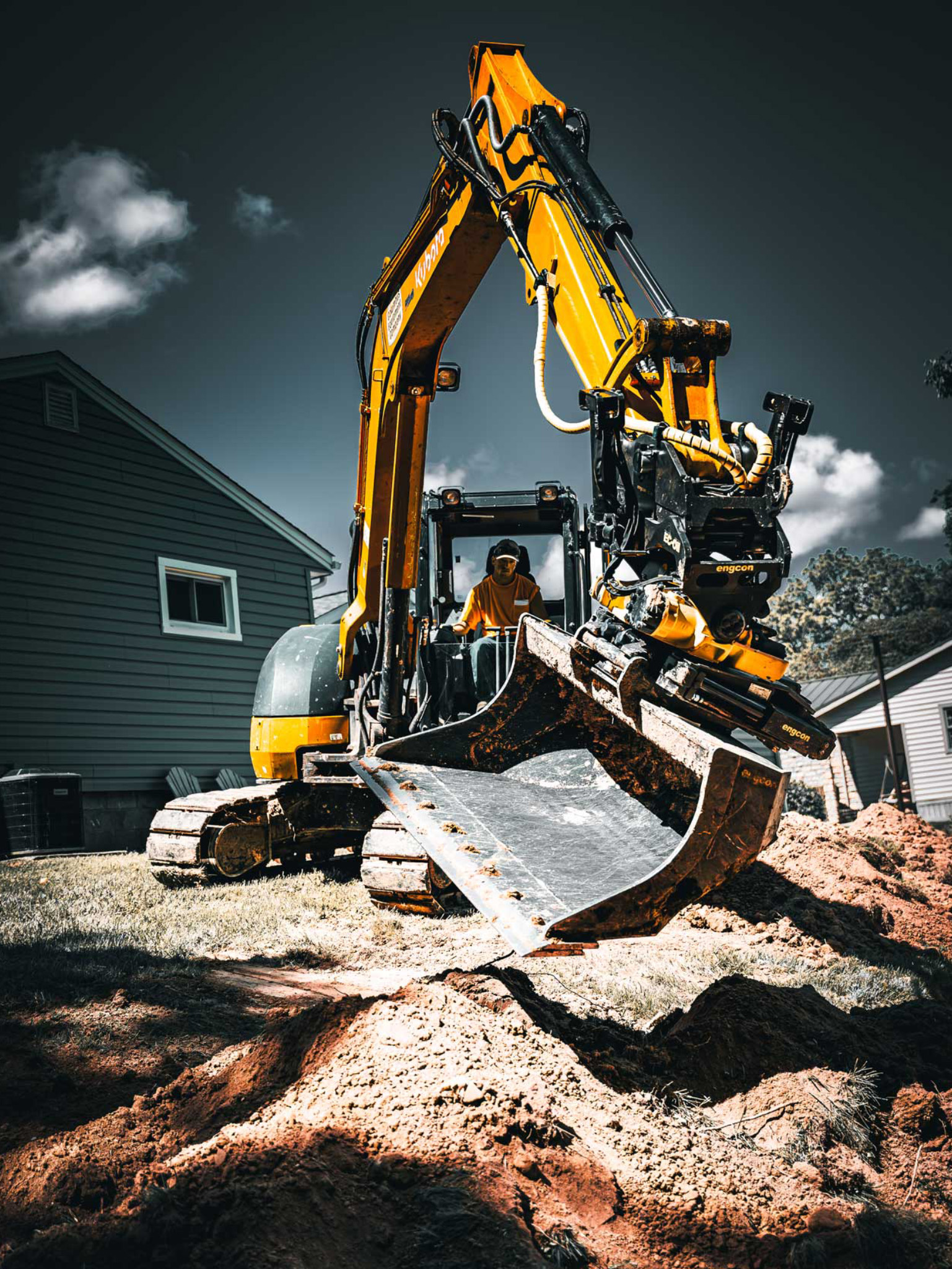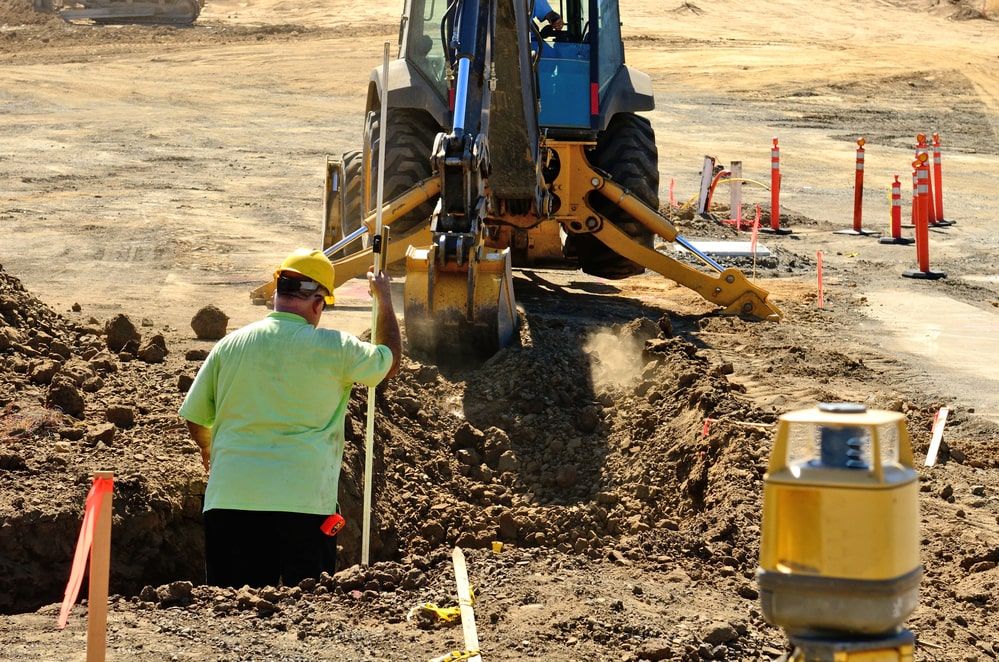Lancaster Excavation - Professional Excavation Providers in Lancaster, OH
Wiki Article
Introducing the Art of Excavation: Pro Tips for Safe and Effective Digging
As dirt is turned and earth is relocated, the details of excavation reveal themselves, requiring a keen understanding of tools, soil make-up, safety and security methods, and environmental considerations. The competence required to browse these aspects properly can suggest the distinction in between a successful excavation project and a potential catastrophe.Relevance of Proper Tools
To make certain the security and effectiveness of any type of excavation job, using the suitable equipment is paramount. Excavation projects vary in range and intricacy, ranging from little property landscape design tasks to large-scale building and construction endeavors.Excavators are basic items of equipment in any type of excavating procedure. These flexible makers can be found in different sizes to suit various task demands. Mini excavators are perfect for smaller sized tasks, while bigger excavators deal with extra comprehensive projects efficiently. Backhoes are another important equipment kind, integrating the functions of a loader and an excavator in one equipment. They are useful for tasks requiring versatility and ability to move.
In addition to excavators, various other vital devices consists of dump vehicles, plates, and bulldozers. Dispose vehicles are vital for removing and delivering excavated materials, while trenchers are made use of for excavating deep and narrow trenches. Bulldozers succeed in tasks that need pressing huge amounts of soil or debris. By investing in the proper devices, excavation jobs can be completed safely, promptly, and with precision.
Comprehending Dirt Make-up
A comprehensive grasp of soil composition is fundamental for executing excavation jobs with precision and safety and security. Recognizing the different kinds of dirt is essential as it straight influences excavation methods, devices selection, and overall job performance. Dirt composition usually consists of four main elements: sand, silt, clay, and raw material. Each part has unique homes that influence exactly how soil responds to excavation procedures.Silt bits are smaller than sand yet bigger than clay, providing moderate water drainage and communication. Organic matter, such as decaying plant product, impacts soil fertility and security.
Before commencing excavation, performing soil examinations to identify its composition and characteristics is important. This information aids in picking the suitable equipment, carrying out safety and security measures, and creating excavation methods tailored to the details soil problems - dump truck companies in ohio. By comprehending dirt structure, excavation specialists can improve task results while ensuring safety and security and adherence to best techniques
Safety Steps and Procedures
Comprehending dirt composition is the keystone upon which precaution and procedures for excavation tasks are developed, making certain the well-being of workers and the success of the endeavor. When it involves safety during excavation, there are numerous key steps that have to be carried out to mitigate risks and stop crashes.First and leading, before any digging begins, a comprehensive assessment of the site should be carried out to determine any type of prospective threats such as below ground energies, unstable soil conditions, or close-by frameworks that can posture a danger. It is essential to have a proficient individual oversee the excavation procedure to guarantee that all company website security protocols are followed strictly.
In addition, all workers associated with the excavation has to be correctly educated in safe digging methods and the correct procedure of equipment. Personal safety tools (PPE) such as tough hats, high visibility clothes, gloves, and security boots must be worn whatsoever times to reduce the danger of injuries. septic ohio. Regular safety and security meetings and toolbox talks should also be conducted to keep all workers educated about potential hazards and reinforce safe job techniques. By sticking to these precaution and methods, excavation tasks can be finished effectively and without occurrence.
Efficient Excavation Planning
When getting started on an excavation job, meticulous preparation is vital to ensure effectiveness, safety, and successful end results. Efficient excavation preparation involves numerous key steps that are crucial for the smooth implementation of the project.When the website assessment is total, the following step is to create a clear timeline and routine for the excavation tasks. This includes figuring out the sequence of tasks, devices demands, and workforce allocation. Appropriate organizing aids avoid hold-ups and makes sure that the task remains on have a peek at this website track.

Furthermore, communication amongst all staff member is critical during the planning phase. Clear regulations, routine updates, and efficient control are crucial for an effective excavation task. By spending effort and time in thorough preparation, excavation groups can significantly enhance productivity, minimize dangers, and accomplish successful results.

Taking Care Of Ecological Considerations
With raising emphasis on environmental sustainability in building and construction practices, managing ecological considerations has actually ended up being a vital facet of excavation projects. Excavation activities have the possible to affect the surrounding environment through soil disintegration, sediment overflow, habitat disturbance, and contamination of water sources. To minimize these risks, it is necessary to carry out ideal practices that focus on environmental management.
Furthermore, proper waste administration is crucial to avoid soil and click to read more water contamination. Executing procedures for the disposal of hazardous materials, recycling of waste products, and minimizing the use of hazardous chemicals can considerably decrease the environmental impact of excavation tasks. By incorporating these practices into excavation planning and execution, building and construction firms can make sure that their jobs are not just risk-free and efficient but additionally eco accountable.
Conclusion
In final thought, understanding the art of excavation calls for a complete understanding of appropriate equipment, dirt structure, safety measures, and reliable preparation. By following these standards and thinking about environmental variables, excavations can be performed safely and efficiently. It is critical to prioritize safety and performance in every digging task to make sure successful end results.As soil is transformed and earth is relocated, the ins and outs of excavation reveal themselves, requiring a keen understanding of devices, soil structure, safety procedures, and environmental considerations.To guarantee the safety and security and effectiveness of any kind of excavation job, making use of the suitable devices is paramount.A detailed grasp of soil make-up is fundamental for carrying out excavation projects with accuracy and security. Recognizing the different types of dirt is crucial as it directly impacts excavation approaches, equipment choice, and general task efficiency. By comprehending dirt structure, excavation experts can improve project outcomes while ensuring safety and security and adherence to finest methods.
Report this wiki page